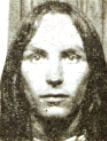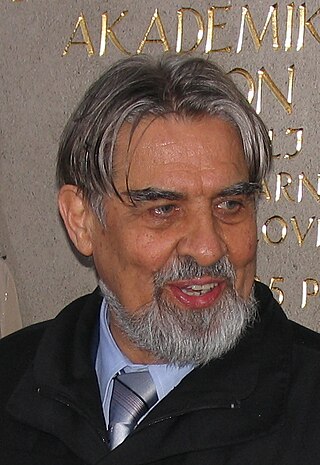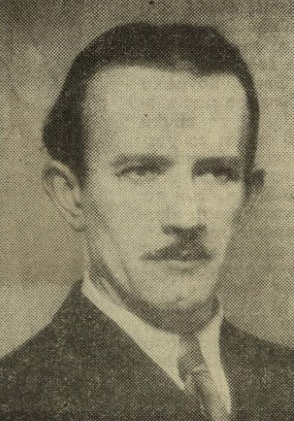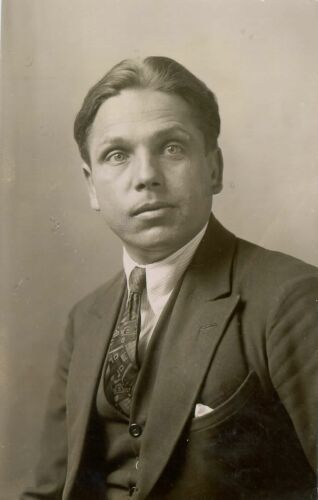
Adriana Jadranka Maraž was a Slovene graphic artist. She was born in Ilirska Bistrica. From 1949 until 1957, she studied painting and graphic art with the professor Maksim Sedej at the Academy of Fine Arts (ALU) in Ljubljana. She had many solo exhibitions and has participated in the Graphic Art Biennales in Ljubljana. She won the Grand Prix at the second Norwegian International Print Biennale in Fredrikstad.

Marko Pogačnik is a Slovenian artist and author.

Zoran Mušič, baptised as Anton Zoran Musič, was a Slovene painter, printmaker, and draughtsman. He was the only painter of Slovene descent who managed to establish himself in the elite cultural circles of Italy and France, particularly Paris in the second half of the 20th century, where he lived for most of his later life. He painted landscapes, still lifes, portraits, and self-portraits, as well as scenes of horror from the Dachau concentration camp and vedute of Venice.

Gojmir Anton Kos was a Slovene academy-trained painter, photographer, and professor at the Academy of Fine Arts in Ljubljana.

Božidar Jakac was a Slovene Expressionist, Realist and Symbolist painter, printmaker, art teacher, photographer and filmmaker. He produced one of the most extensive oeuvres of pastels and oil paintings, drawings and, above all, prints in Slovenia. He was also one of the key organizers in the establishment of the Ljubljana Academy of Fine Arts and the International Biennal of Graphic Art in Ljubljana. Some of his work is on display in museums in Belgrade.
Miljenko Licul was a Slovenian graphic designer of Croatian descent. He was one of the most prominent graphic designers in independent Slovenia.
Herman Gvardjančič, is a Slovene painter.

Ciril Zlobec was a Slovene poet, writer, translator, journalist and former politician. He is best remembered for his poems, publishing several volumes of poetry in his lifetime. In 1990 he became a member of the Presidency of Slovenia at a critical time for Slovene independence.
Savin Sever was a Slovene architect. He was the son of a lawyer from the Littoral temporarily working in Krško, but he grew up in Maribor and Ljubljana.
Tinca Stegovec was a Slovenian artist, known mostly for her printmaking and painting, and associated with the group of artists internationally known as Ljubljana Graphic School.

Ive Šubic was a Slovene painter, graphic artists and illustrator.

Marij Pregelj was a Slovene painter, considered one of the key figures in Slovene painting in the second half of the 20th century.
Nikolaj Omersa was a Slovene painter and illustrator.

Maksim Sedej was a Slovene painter, one of the key figures of the mid-20th-century art scene in Slovenia.
Janez Vidic was a Slovene painter and illustrator, best known for his oil paintings of landscapes and people as well as his murals.
Klavdij Palčič is a painter, print artist, drawer, and scene painter. After graduating from the Secondary School of Science in Trieste, Palčič's plan was to study political sciences, but he changed his mind and entered the Venice School of Arts where he graduated in 1964.

Bogdan Borčić was a Slovene painter, printmaker, and educator. He was one of the most prolific and versatile Slovene visual artists.

Lojze Dolinar was a Slovenian sculptor recognized for his impact on local and global 19th- and 20th-century art. When he moved to America he worked in architectural plastic art and thereafter in antique and modern art. In 1931 he went to Belgrade and between World War I and World War II he became one of the most sought-out monument sculptors. In 1946 he joined the Belgrade Fine Arts Academy and three years later got a professorship there. Among others he was taught by Alojzij Repič and worked with Jože Plečnik.

Janez Mejač is a Slovenian ballet dancer and choreographer.

Ivo Mršnik is a Slovenian painter, graphic artist, draughtsman and professor.













